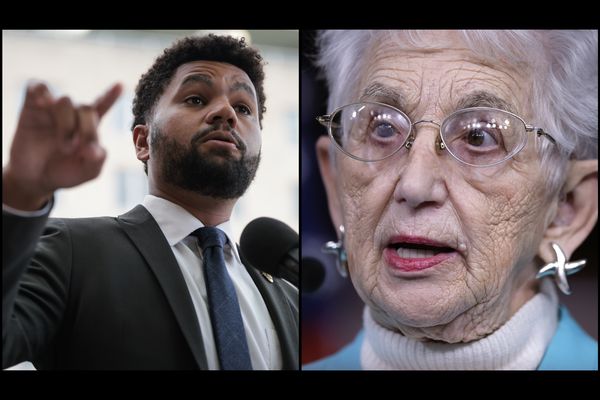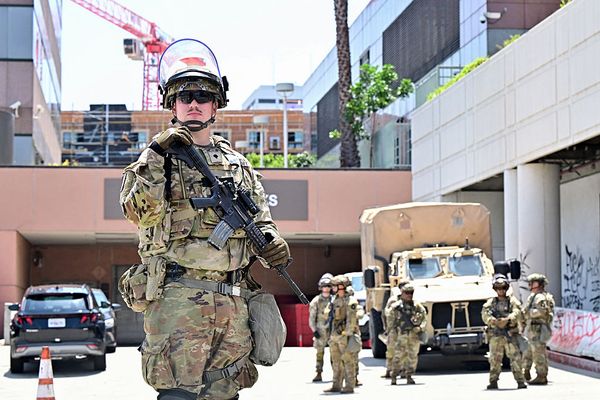
At 8.30 am on December 11, 14-year-old Chaitram Oyam was with his parents, tending the kosra fields adjoining a jungle near his home in southern Abujmarh in Chhattisgarh’s Narayanpur.
“I went to the river to fetch some water. While I was filling my container, I suddenly saw a large group of security forces,” the child told Newslaundry on the phone. “Suddenly, they started firing at me.”
Terrified, Chaitram fled deeper into the jungle. His uncle and cousin joined him, having also been nearby, and they hid in the dense undergrowth. Chaitram was in pain; he realised he had been hit but he didn’t dare leave the jungle.
They emerged only two days later to find Chaitram’s father, Masal Oyam, had been shot dead.
Masal was one of several villagers killed that morning by a group of personnel from the District Reserve Guard and Chhattisgarh police. The security forces issued a press release saying the villagers were “Naxals”. But the villagers insist they were not – and that the forces had also fired upon four children, including Chaitram. Several of them are presently being treated for injuries at a hospital in Dantewada and Raipur.
The police did not deny to Newslaundry that they fired on children.
“I was with my parents farming,” said Sonu Oyam, who is eight years old. “Suddenly, firing began. Something hit my head. When I woke up, I was lying on the ground.”
Sonu’s mother Pendo told Newslaundry a bullet grazed her son’s head that morning. “My husband, son and I went to the fields to farm. I went to collect water when the firing started,” she said. “I started running. My husband also ran but my son couldn’t. He was hit by a bullet.”

The state’s version of events, according to a press release, is this: On December 10, security forces received “intelligence” about suspected Maoists located in southern Abujmarh. They claimed a meeting of “top-level Naxals” from Chhattisgarh, Maharashtra and Odisha was being organised deep within the jungles under the Mad division’s Indravati area committee, referring to the Naxal command in Abhujmarh.
So, the security forces assembled a team comprising members of the District Reserve Guard in Narayanpur, Dantewada and Kondagaon, and members of the CRPF and police Special Task Force. They conducted an “operation” from December 10 to 12 that resulted in the deaths of seven “Naxalites”.
The dead were identified by the police as Ramchandra alias Dasru, Kosi alias Ramila Madkam, Rainu Poyam, Somari Oyam, Guda Kuchha, Kamlesh alias Kohla, and Somaru alias Motu. The police said Ramchandra – who also goes by the names Kartik and Prudavi Mohan Rao – was a member of an Odisha state area committee of Maoists.
Villagers told Newslaundry a different story. Some of the names in the press release are misspelled – Guda Kuchha refers to a villager named Gudsa Oyam, Kamlesh alias Kohla is Kohlal Oyam. Somari Oyam is also a villager, they said, as is Motu Oyam. The fifth name, Renu Poyam, was listed in the press release but alongside a photograph of Masal Oyam. They alleged only two of the people named in the press release – Kosi and Ramchandra – are Naxals.


But the police insist the five villagers were Naxals.
“They were not ordinary villagers. They were members of the Maoist party,” said P Sundarraj, Inspector General of Bastar Range. “While they may have been residents of nearby areas, that does not mean they were not involved in Naxal activities.”
When asked about the shooting of children, Sundarraj said: “Our preliminary investigation suggests that the children who were injured were likely being used as porters or human shields. Based on our findings so far, it appears the Naxals used them as shields during a firefight, and they may have been injured in the crossfire. We are continuing our investigation into the matter.”
Newslaundry spoke to villagers about what happened that day.
Sukli Oyam, whose husband Gudsa Oyam was killed, told Newslaundry she was harvesting rice with her husband in the field on December 11.
“I heard the cries of villagers who were running. When we heard the sound of gunshots, we also started running,” she said. “The police were in large numbers and firing continuously. I somehow escaped but my husband couldn’t and was killed.”
Compounding Sukli’s trauma is that her son Newar Oyam, aged 14, is now missing. “He ran with his father to save his life but I cannot find him anywhere,” she said. “Villagers are saying it’s possible he has also been killed.”
Sukli, who has another son and daughter, is now trying to come to terms with what happened that day. “Our family was living happily. My husband and I were raising our family by farming,” she said. “He was not part of any Naxal group. The police killed him and other villagers for no reason.”

Chaitram’s mother Shudlu Oyam, whose husband Masal was killed, told Newslaundry: “We were working in the fields that morning with other villagers when we heard firing. Everyone panicked and began fleeing in all directions.”
Shudlu alleged she saw “police firing indiscriminately at the villagers”.
“My husband was pumped with two bullets. He was not dead, he was injured. The police took him away,” she alleged, adding she only learned he had died when the security forces issued the press release. “My husband was not a Naxal. He was just a simple farmer.”
Ramli Poyam, 15, told Newslaundry she was at the same spot that morning with her parents, harvesting black gram from the field, when the “police” arrived.
“The police started firing. Everybody was running here and there,” she told this reporter on the phone. “I was working in the field. Before I could do anything, something struck my neck from behind and I fell down. I don’t know what happened after that.”
Ramli was taken to a community health centre in Bhairamgarh. She was transferred first to a medical hospital in Dantewada, then to Jagdalpur hospital, then to Mekahara hospital in Raipur, and then finally to DKS hospital in Raipur.
Newslaundry has copies of medical reports of some of the injured children.
Ramli’s report from the community health centre in Bhairamgarh, dated December 14, mentions an unknown foreign object lodged in the back of her neck, and says the patient had pain and swelling in the neck area. Ramli’s x-ray from Mekahara hospital shows a bullet lodged near her vertebrae. Her medical report from the same hospital notes a “gun shot injury” on the back of her neck with the bullet still lodged near “C-1 vertebrae” that caused “fracture of transverse process of C-1 vertebrae”.


Sonu Oyam’s medical report says he was hit by an unknown foreign object on his head. Chaitram’s medical report indicates a “foreign object” hit his buttock and thigh.
A villager named Nakari told Newslaundry he first heard firing “early in the morning at around 4 am”. But it was after 8 am, when “many villagers” were farming, that Nakari saw “police had taken position and started firing at us”.
“I myself saw Chaitram being hit by bullets,” he said. “His father was sprayed with two bullets. Then everybody started running to save their lives.”


Raju Banda, 17, told Newslaundry that he had been in the field on December 11, visiting from Mudumwada village in Narayanpur. He was helping his sister and her family with their farming when security forces allegedly opened fire. Raju was shot on the leg and was admitted to the community health centre in Bhairamgarh.
Soni Sori, a Chhattisgarh-based activist, told Newslaundry she received phone calls from villagers on the night of December 13, saying some villagers had been killed and children had been injured.
“I travelled to Tadopot village near Bairamgarh, crossing the Indravati river. I waited there for four hours, urging the villagers to bring the children to the riverbank,” she said in a telephonic interview. “Three children were carried on charpoys to the river. We crossed the river by boat.”
Later that evening, Soni helped admit three children – Sonu, Chaitram and Ramli – to the community health centre in Bairamgarh.
“Their wounds were severely infected. After receiving initial treatment that night, they were referred to Dantewada,” she said. “While Sonu and Chaitram stayed at Dantewada for further care, Ramli was transferred to Jagdalpur and then referred to Raipur for advanced treatment.”
Between January and June this year, 104 villagers were killed in Bastar division in “encounters”; in all these cases, the security forces alleged they were Naxals. On the December 11 incident, activist Soni Sori told Newslaundry this “was not an encounter between security forces and Naxals; it was a direct massacre of innocent villagers by security forces”.


“They surrounded the tribal villagers, who were simply farming, and opened fire indiscriminately. They specifically targeted and killed them,” she alleged. “The five individuals named as Naxals didn’t have anything to do with Naxalism, they were ordinary villagers. There is clear evidence of this and the survivors are witnesses to the truth.”
She added: “They aren’t even sparing children. Why else would they fire at young children who have no involvement in anything? Are they trying to kill eight- and 15-year-old children and label them as Naxals just to justify their actions? This incident demands an investigation by the government. There must be a judicial inquiry, and those police personnel responsible for killing innocent villagers should be held accountable and punished according to the law.”
At Newslaundry, we believe in holding power to account. Our journalism is truly in public interest – funded by our subscribers, not by ad revenue from corporates and governments. You can help. Click here and join the tribe that pays to keep news free.
Newslaundry is a reader-supported, ad-free, independent news outlet based out of New Delhi. Support their journalism, here.







